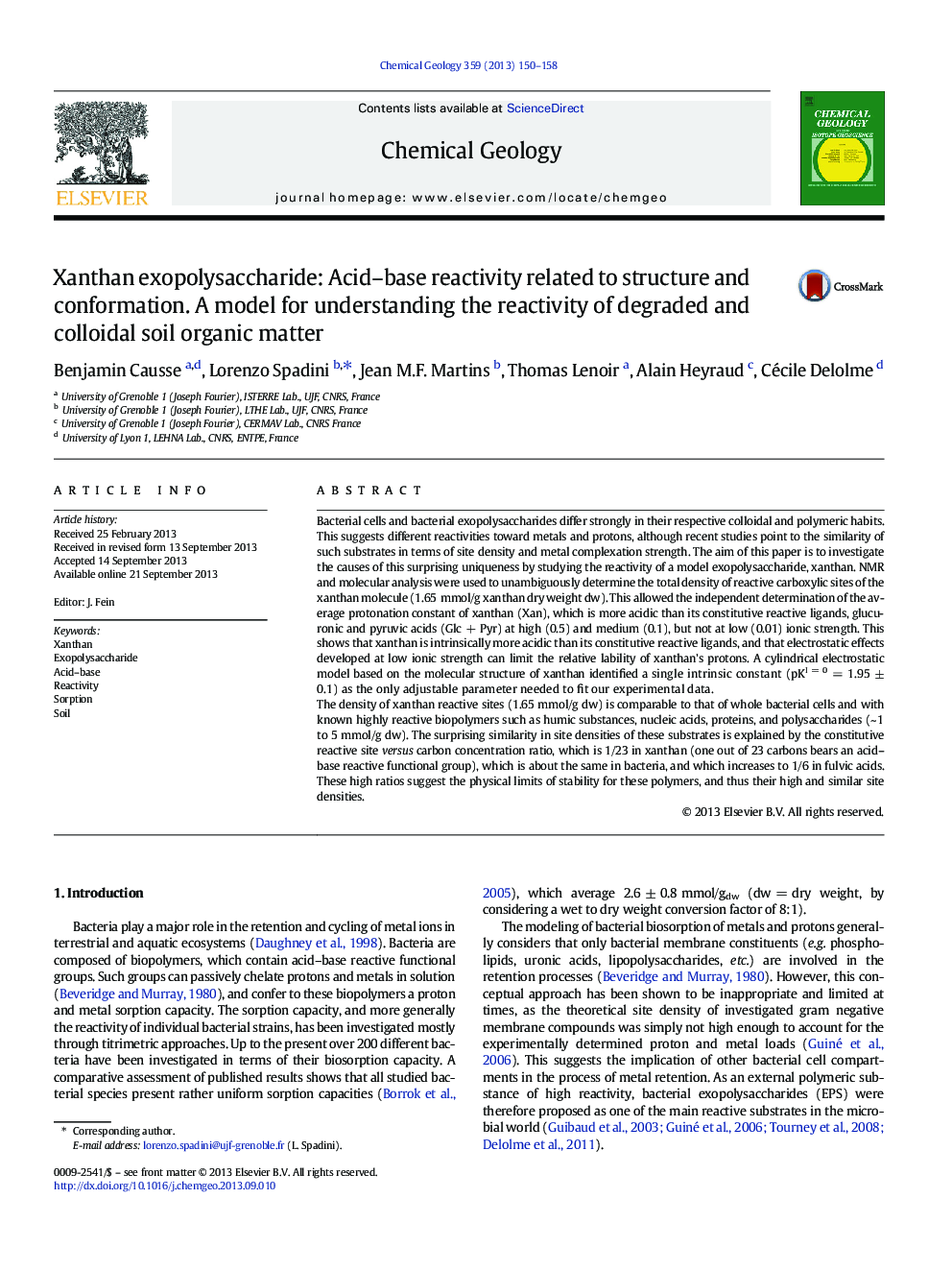| کد مقاله | کد نشریه | سال انتشار | مقاله انگلیسی | نسخه تمام متن |
|---|---|---|---|---|
| 4698922 | 1637610 | 2013 | 9 صفحه PDF | دانلود رایگان |

• We investigate the acid–base reactivity of xanthan, a bacterial exopolysaccharide.
• The structure-determined total site concentration limits modeling uncertainties.
• A single adjustable parameter structure-based electrostatic model is presented.
• The xanthan reactivity is compared to other polymeric & bacterial substrates.
• The similar reactivities of environmentally relevant substrates are explained.
Bacterial cells and bacterial exopolysaccharides differ strongly in their respective colloidal and polymeric habits. This suggests different reactivities toward metals and protons, although recent studies point to the similarity of such substrates in terms of site density and metal complexation strength. The aim of this paper is to investigate the causes of this surprising uniqueness by studying the reactivity of a model exopolysaccharide, xanthan. NMR and molecular analysis were used to unambiguously determine the total density of reactive carboxylic sites of the xanthan molecule (1.65 mmol/g xanthan dry weight dw). This allowed the independent determination of the average protonation constant of xanthan (Xan), which is more acidic than its constitutive reactive ligands, glucuronic and pyruvic acids (Glc + Pyr) at high (0.5) and medium (0.1), but not at low (0.01) ionic strength. This shows that xanthan is intrinsically more acidic than its constitutive reactive ligands, and that electrostatic effects developed at low ionic strength can limit the relative lability of xanthan's protons. A cylindrical electrostatic model based on the molecular structure of xanthan identified a single intrinsic constant (pKI = 0 = 1.95 ± 0.1) as the only adjustable parameter needed to fit our experimental data.The density of xanthan reactive sites (1.65 mmol/g dw) is comparable to that of whole bacterial cells and with known highly reactive biopolymers such as humic substances, nucleic acids, proteins, and polysaccharides (~ 1 to 5 mmol/g dw). The surprising similarity in site densities of these substrates is explained by the constitutive reactive site versus carbon concentration ratio, which is 1/23 in xanthan (one out of 23 carbons bears an acid–base reactive functional group), which is about the same in bacteria, and which increases to 1/6 in fulvic acids. These high ratios suggest the physical limits of stability for these polymers, and thus their high and similar site densities.
Journal: Chemical Geology - Volume 359, 14 November 2013, Pages 150–158